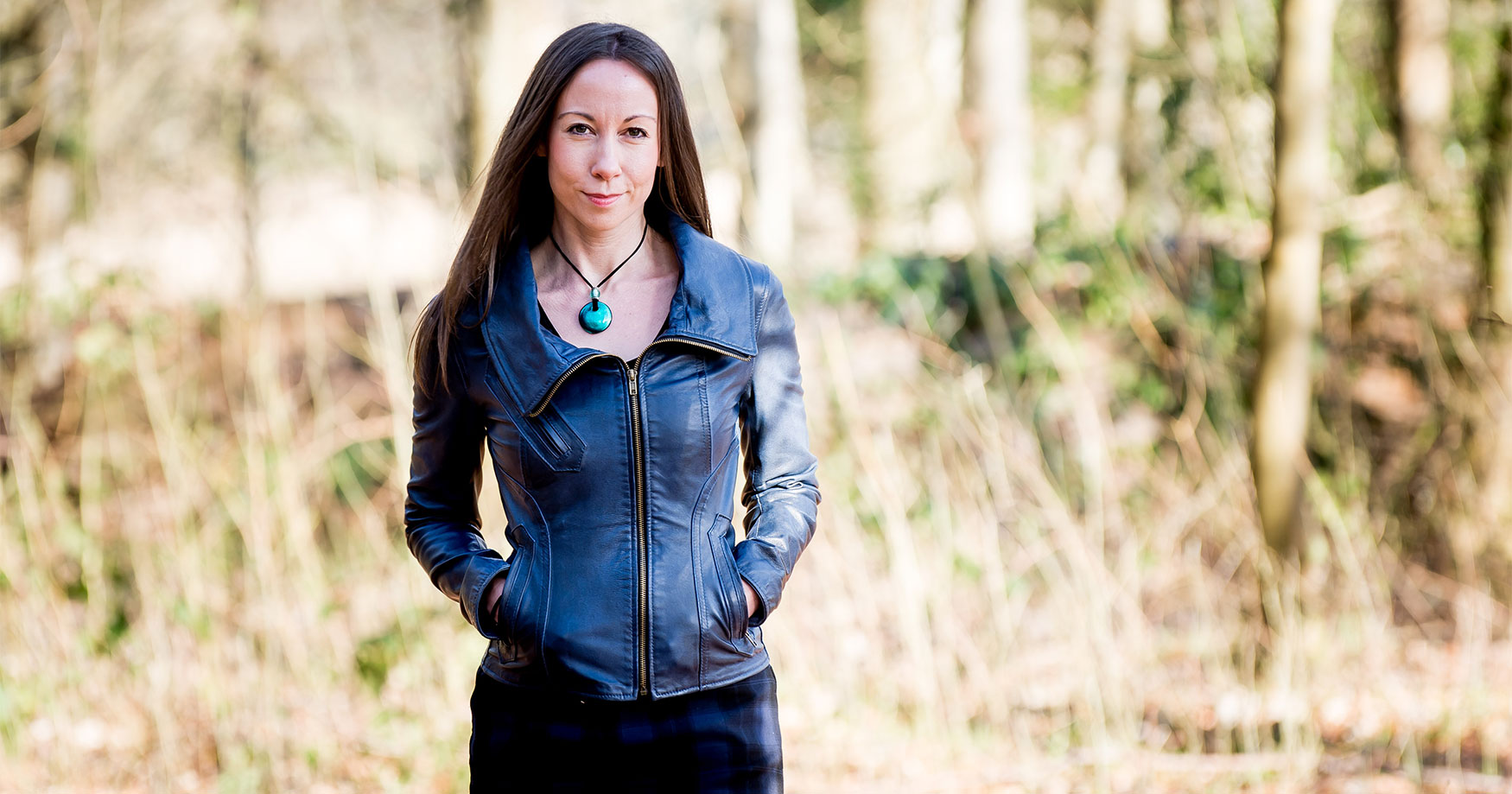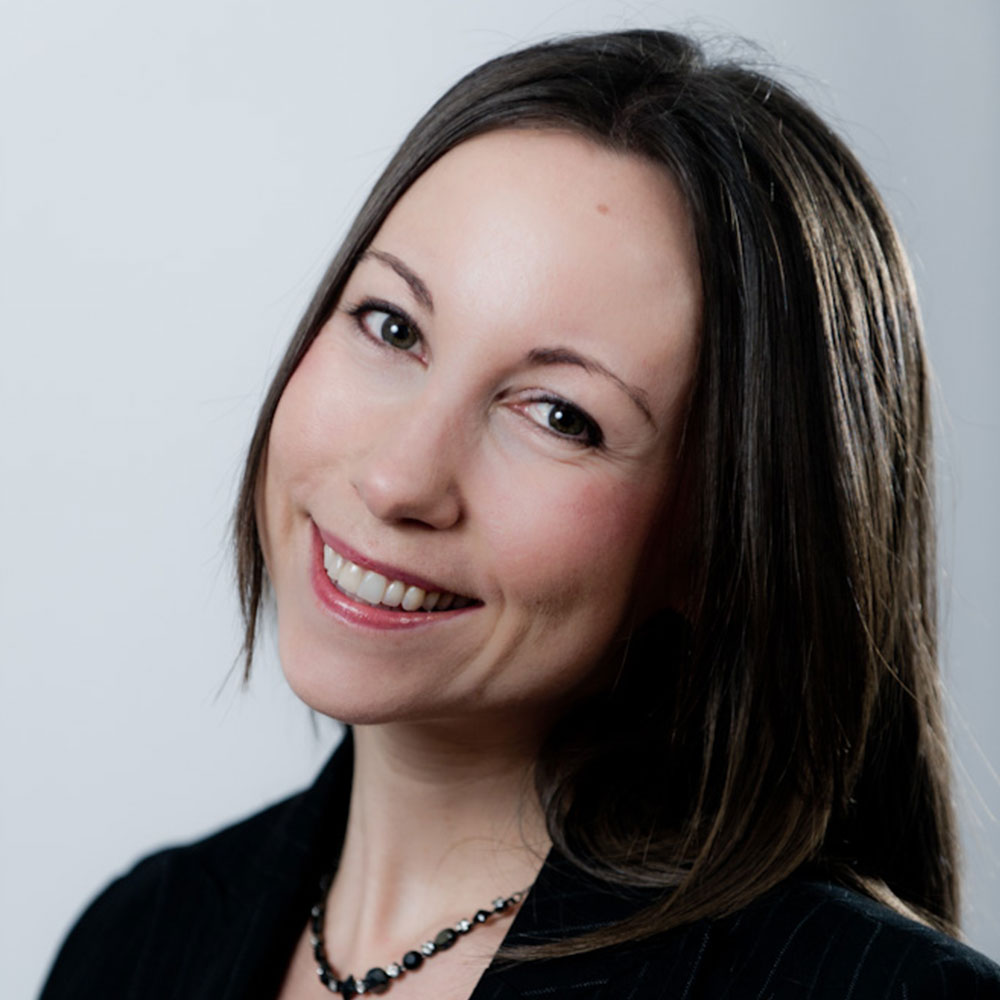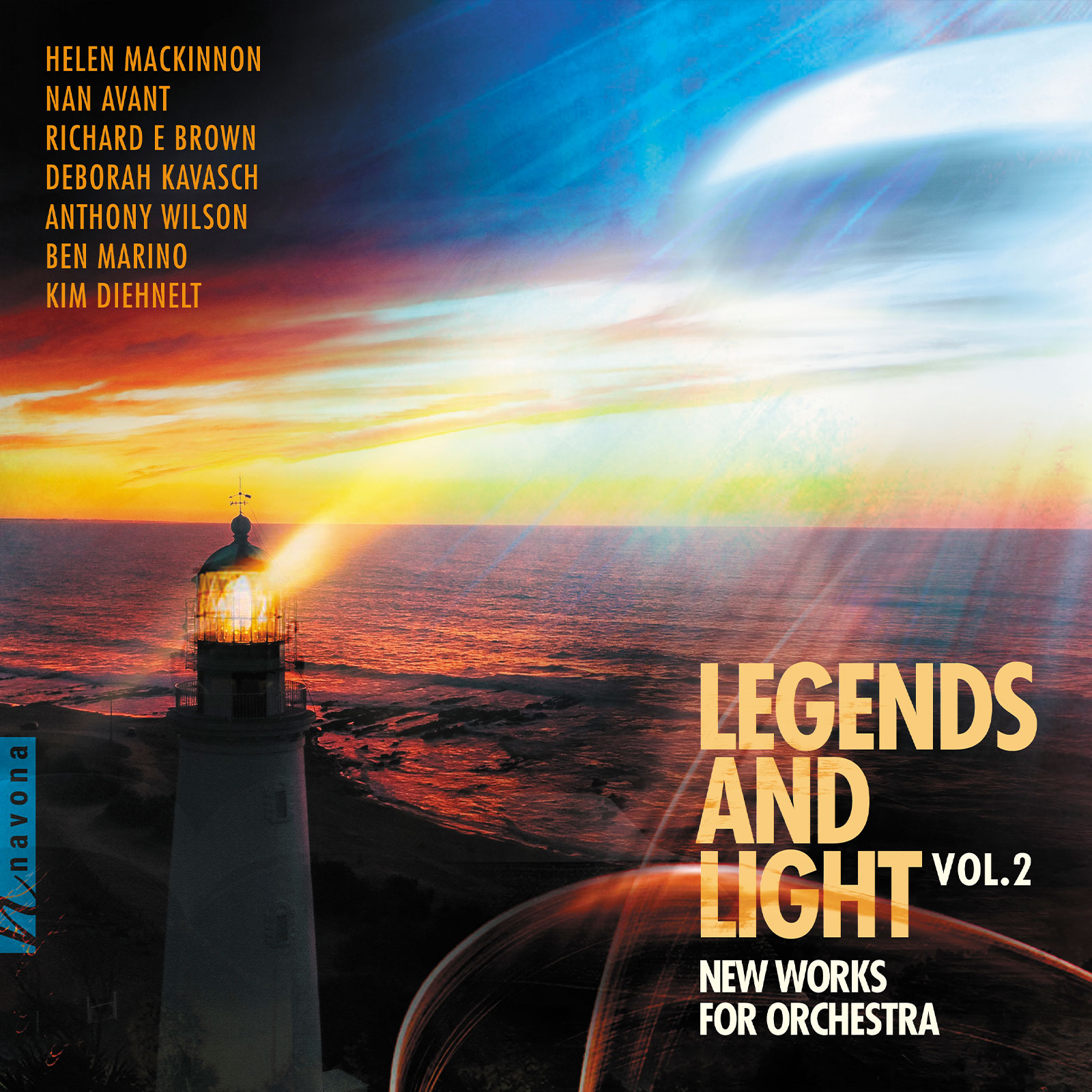
LEGENDS AND LIGHT VOL. 2 from Navona Records leaves no stone unturned. From the vast expansiveness of the open sea to the microscopic particles of our world’s chemical makeup, this follow-up to 2018’s LEGENDS AND LIGHT is an ambitious collection of new works for large ensemble. Featured on the album is composer Helen MacKinnon’s The Rinns of Islay, a musical journey around the coastal shores of the Inner Hebridean island of Islay in Scotland.
Today, Helen is our featured artist in “The Inside Story,” a blog series exploring the inner workings and personalities of our composers and performers. Read on to learn about the coin toss that sparked her musical career, and how she gains inspiration on motorcycle rides through Scotland and Europe…
If you weren’t a musician, what would you be doing?
I would probably have been an astrophysicist or a meteorologist! I loved math and physics growing up and was fascinated by the sky, the elements, and the cosmos. I used to have a giant map of the UK pinned to my wall and made my poor parents watch my daily weather reports when I was a child. My bookshelf is still littered with books about clouds and comets. I applied for music, astrophysics, and meteorology courses at university and life could have gone either way. I tossed a coin (literally!) and music won the toss. The natural world and universe remain a source of inspiration in my writing so the two have found their place.
What advice do you have for young musicians?
My advice for young composers is to be true to yourself and your own voice. Write for you first, and everyone else second. Learn about different styles of writing, experiment with techniques and refine your craft, but ultimately, aim to carve out a style of writing that is unique to you. Find resilience and patience — you’ll need them in abundance — but always believe in your own voice.
Secondly, speak to singers and instrumentalists as performers. Ask for feedback on drafts, ideas, and playability as you’re writing then more ask for feedback during rehearsals and after performances. Get involved as a performer in groups; sing in choirs and play in orchestras or bands. There’s no better way to learn than by immersing yourself in live music. And pay close attention to conductors. As a composer, you can learn so much from conductors.
Do you have any specific hopes about what this album will mean to listeners?
LEGENDS AND LIGHT VOL 2 is a striking compilation of different composers’ takes on our world. It’s wonderfully and unusually melodic for a contemporary classical album and it stands out in the crowd because of that.
I hope people enjoy the melodic nature of The Rinns of Islay. As a contemporary composer, my writing is unapologetically melodic and audiences respond very well to that. One gentleman emailed me on release day to say he’d “just about given up on contemporary music” and was genuinely shocked that the album was “musical and lovely to listen to!”
I hope that listeners will come on the journey around the island, enjoying a sense of Islay’s beauty, character, and environmental influences. It’s intended to be a story, a musical tour, and I hope that listeners will find themselves transported to another place and visualize the scenes unfolding.
What were your first musical experiences?
I started learning music from an early age. From age 5, I took piano lessons with my grandmother; she was a superb pianist and taught me for many years. I played a lot of Bach, Haydn, and Mozart and then started to explore more contemporary composers as I got older.
At age 7, I had the chance to audition for a music school which ran every Saturday morning. I went there for about 4 years, taking violin lessons and music appreciation classes, and developing aural and listening skills. Looking back, it was central to my musical development.
I also benefited hugely from my mum being the church organist. My sister and I would sit in the choir as kids and before we knew it, we were singing in the choir, learning to sight-sing, and by my teenage years, I was holding the alto line in our small choir. I was also immersed in Catholic liturgical music and singing in Latin, which went on to influence my compositions.
Where and when are you at your most creative?
The creative juices tend to flow best in the afternoon. I need complete focus for a few hours to get the best out of a composing session. Dipping in and out of a piece doesn’t work for me.
I have a composing corner in the flat with my Mac and electric piano, often surrounded by cups of coffee! I use my voice to compose, singing melodies and adding layers of harmonies and then using Sibelius to capture the lines. I’m still quite old school in how I write; trusty manuscript paper and a pencil persist!
I often find creativity surfaces when I’m traveling, whether on trains for work, or when I’m on the motorbike. I ride pillion so often I have hours in my own thoughts as we ride around Scotland and Europe. Traveling is packed with inspirational landscapes and experiences.
What was the first performance you remember seeing?
Childhood was full of trips to concerts to hear my mum sing, or to a Christmas show where grandmother was playing the piano. I also loved the buzz and excitement of shows; the energy both on and off stage. There was something magical about a performance and the energy between performances and audiences, and I wanted to be part of that.
The first professional performance that I can remember properly was musical theater, watching Jesus Christ Superstar in Edinburgh Playhouse. That was the beginning of a love of musical theater. I remember being particularly fascinated by musicians in the orchestra pit and putting that on my bucket list of things I wanted to do one day.

Scottish composer Helen MacKinnon studied music at The University of Glasgow, specializing in composition and graduating with a Bachelor of Music First Class Honours. Her most notable work of that period was Crossing the Domain, a setting of Scottish poet Edwin Morgan’s poem From the Domain of Arnheim for female voices and percussion. MacKinnon cites her compositional influences as being her Scottish heritage, Catholic faith, and cinematic music.

